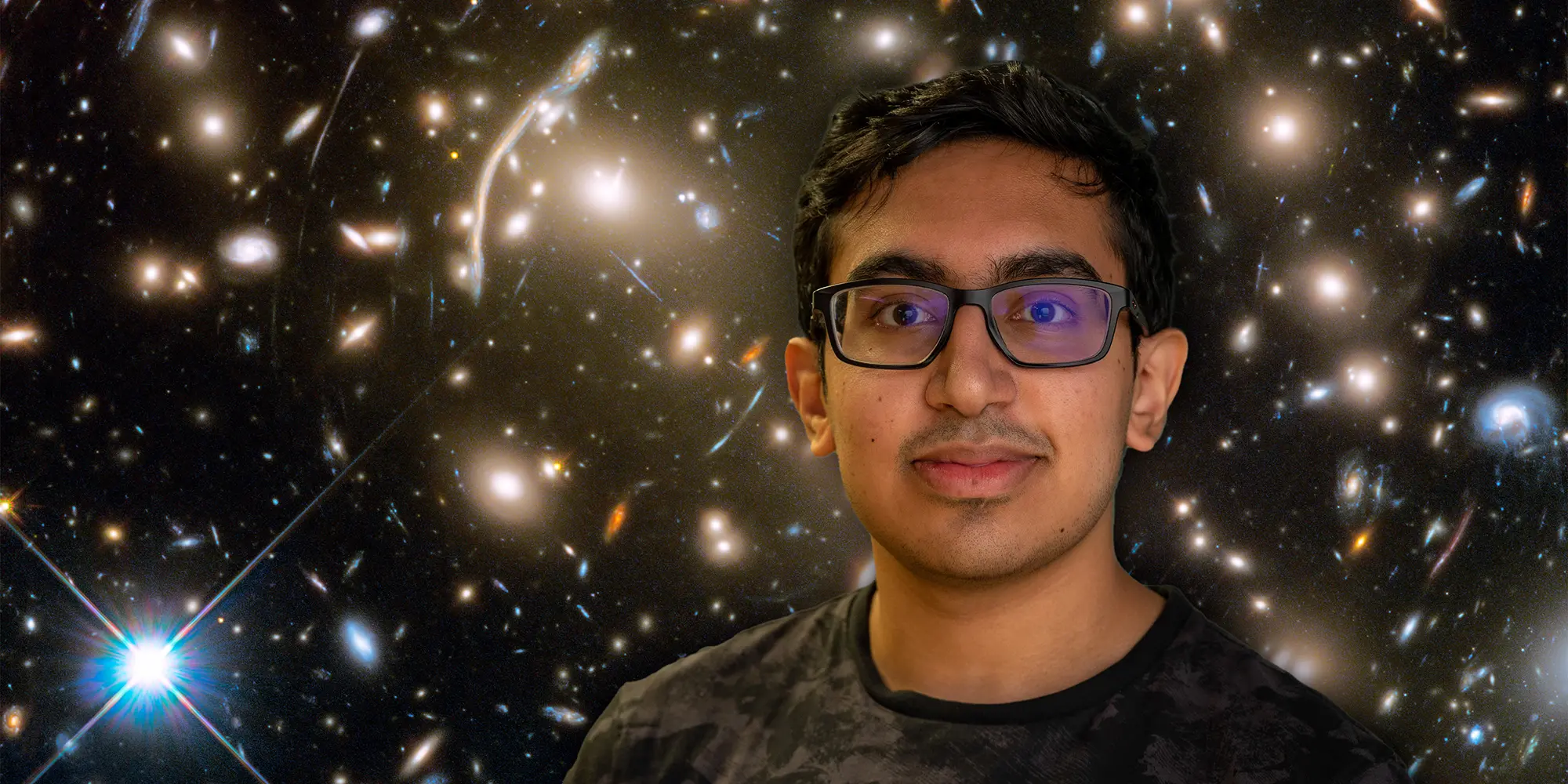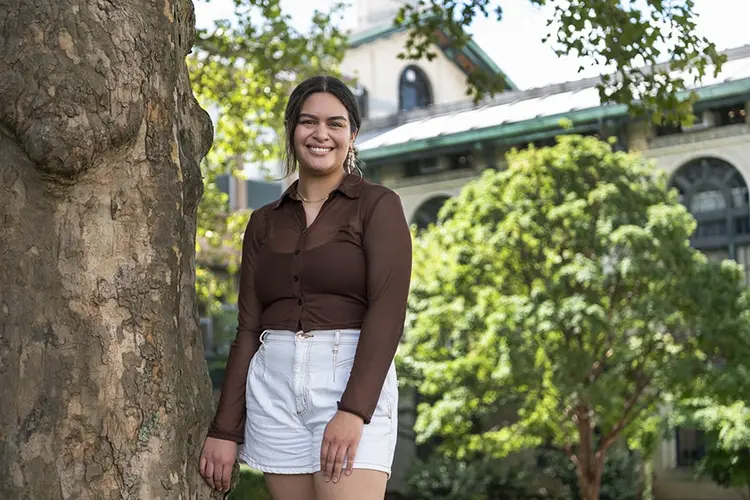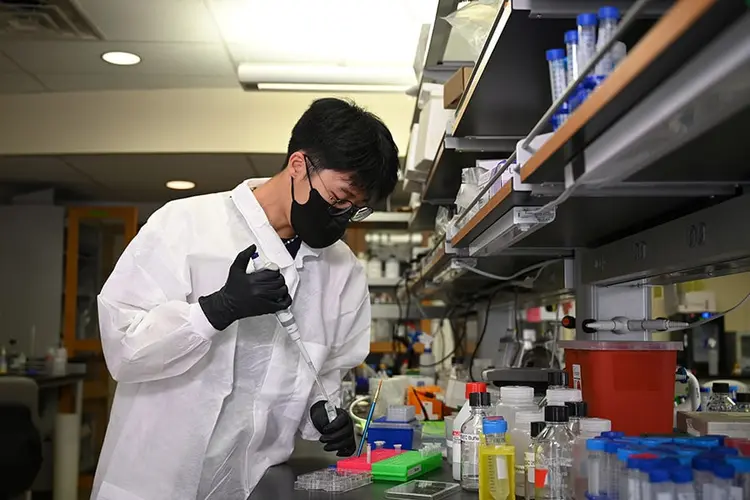
Ali Shakir Aims to Shine Light on Gravitational Lensing
Media Inquiries
Carnegie Mellon University student Ali Shakir is working to correct an error in how cosmologists measure intrinsic galaxy alignments.
When viewing faint galaxy images, researchers have to factor in distortions such as when a distribution of matter — like a cluster of galaxies — has a gravitational field that bends the light of a distant source as it travels toward an observer. The phenomenon is known as gravitational lensing.
"In weak gravitational lensing, light comes from a background source that passes through a a large concentration of mass, like a galaxy cluster. That gets deflected, according to Einstein's theory of relativity," said Shakir, a junior in physics(opens in new window) and statistics and data science(opens in new window). "Cosmologists care about measuring this lensing because it tells us about how matter — and specifically dark matter — is distributed through the universe."
He spent last summer working in the lab of physics professor Rachel Mandelbaum(opens in new window)�through a Summer Undergraduate Research Fellowship(opens in new window) (SURF) grant, which is provided through Carnegie Mellon's Office of Undergraduate Research and Scholar Development(opens in new window).
The work is part of a weak gravitational lensing project by Mandelbaum's research group, which applies methods from statistics and machine learning to cosmological problems involving large datasets.
"Ali is very hard-working and a fast learner," Mandelbaum said. "He had to learn a lot of new physics and programming skills for this project and was able to do so very effectively."
His work is related to understanding and accounting for a systematic error in measuring the effects of gravitational lensing. The challenge is weak lensing is used to better understand the distribution of matter in the universe, and intrinsic alignments — where galaxies have a tendency to align with other nearby galaxies — contaminate these measurements by mimicking gravitational lensing signals.
Shakir aims to measure intrinsic alignment signals more effectively using cosmological simulation data containing 3D information about galaxies and matter that can be used to better understand the physical effects that could affect intrinsic alignment measurements.
The code and much of the theory Shakir uses was created by Sukhdeep Singh, a McWilliams Postdoctoral Fellow in the Department of Physics, and physics doctoral student Yesukhei Jagvaral, who both mentored Shakir.
"We think there's a better way to fit this data so we can measure this alignment parameter more accurately with less noise," Shakir said. "We've noticed that alignments are more prevalent with elliptical galaxies, because they're more affected by gravitational tidal fields. But the effect is not so prevalent with disc galaxies like the Milky Way because they have a lot of angular momentum and tend to retain their shape very well."
Shakir, who is the only undergraduate currently working on the project, said working with Mandelbaum and other members of Carnegie Mellon's McWilliams Center for Cosmology(opens in new window) has been amazing.
"The McWilliams Center is a really special place. It does groundbreaking work, and it's been great to get an idea of the field and learn about really fascinating work happening at Carnegie Mellon," Shakir said. "It also has been a chance for me to interact with people who I look up to and people who I'd like to be like in the future. I very much see myself walking a similar path as the graduates and professors in the department."
Mandelbaum said thanks to Shakir's efforts they anticipate working with him to write a journal article describing his novel results.
"Working with undergraduate researchers is an important part of our educational mission. By carrying out research projects, undergraduates learn a wide range of skills that are not necessarily taught in the classroom, or that they learn in the classroom but develop further by carrying out research," she said. "These include not only physics concepts and technical skills, like statistical analysis and software development, but also more general problem-solving and communication skills that will serve them well in many other contexts."


